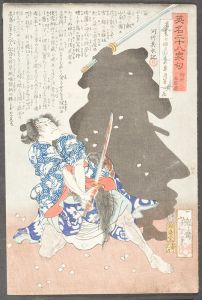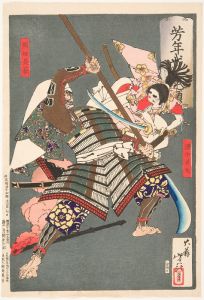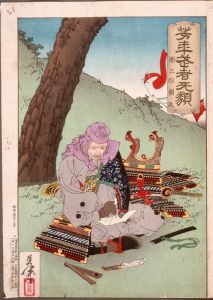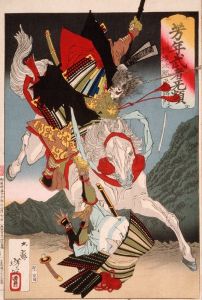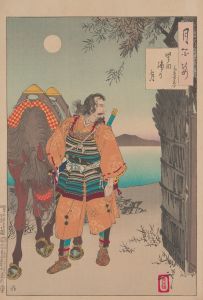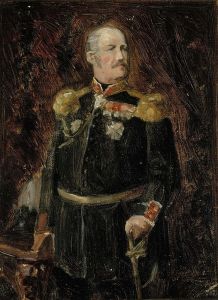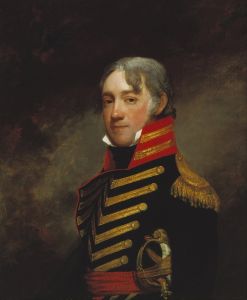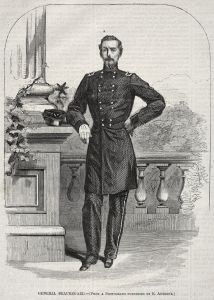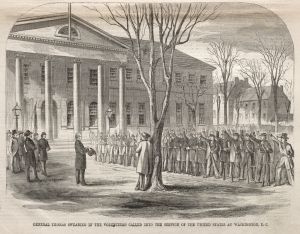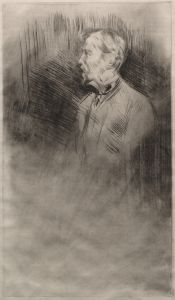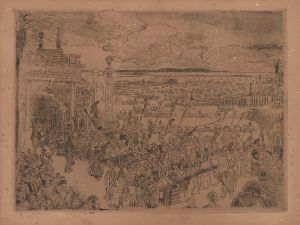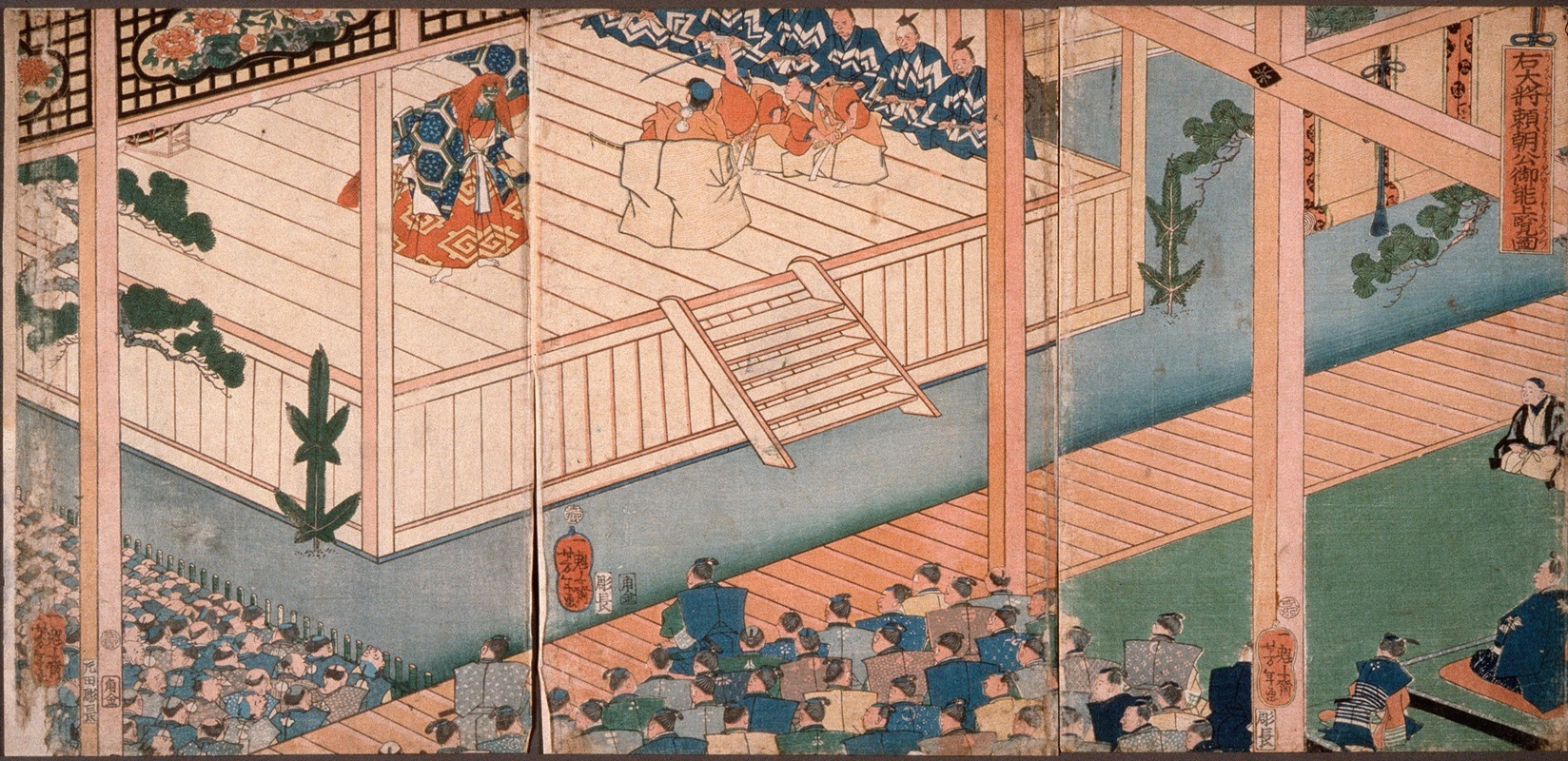
General of the Right Lord Yoritomo inspects a special Nō performance
A hand-painted replica of Tsukioka Yoshitoshi’s masterpiece General of the Right Lord Yoritomo inspects a special Nō performance, meticulously crafted by professional artists to capture the true essence of the original. Each piece is created with museum-quality canvas and rare mineral pigments, carefully painted by experienced artists with delicate brushstrokes and rich, layered colors to perfectly recreate the texture of the original artwork. Unlike machine-printed reproductions, this hand-painted version brings the painting to life, infused with the artist’s emotions and skill in every stroke. Whether for personal collection or home decoration, it instantly elevates the artistic atmosphere of any space.
"General of the Right Lord Yoritomo Inspects a Special Nō Performance" is a woodblock print created by the renowned Japanese artist Tsukioka Yoshitoshi. This artwork is part of Yoshitoshi's series "New Forms of Thirty-Six Ghosts" (Shinkei Sanjūrokkaisen), which was published in the late 19th century, specifically between 1889 and 1892. Yoshitoshi is celebrated for his innovative approach to traditional ukiyo-e art, often incorporating elements of folklore, history, and supernatural themes into his work.
The print depicts Minamoto no Yoritomo, a prominent historical figure who was the founder and the first shōgun of the Kamakura shogunate of Japan. Yoritomo's reign marked the beginning of the Kamakura period, which lasted from 1185 to 1333. This era was significant for the establishment of a feudal system in Japan and the rise of the samurai class. Yoritomo's leadership and military prowess were instrumental in consolidating power and establishing a new form of governance that shifted authority away from the imperial court in Kyoto.
In the artwork, Yoritomo is shown attending a Nō performance, a classical form of Japanese theater that combines elements of dance, drama, music, and poetry. Nō theater has a rich history, with its origins tracing back to the 14th century. It is characterized by its use of masks, elaborate costumes, and a slow, stylized form of movement. The themes of Nō plays often revolve around historical events, literature, and the supernatural, making it a fitting subject for Yoshitoshi's series.
Yoshitoshi's depiction of Yoritomo at a Nō performance highlights the cultural significance of Nō theater during the Kamakura period and its continued importance in Japanese culture. The print captures the elegance and solemnity of the performance, as well as the dignified presence of Yoritomo as an observer. Yoshitoshi's attention to detail and his ability to convey the atmosphere of the scene are evident in the intricate patterns of the costumes and the expressive postures of the figures.
Tsukioka Yoshitoshi (1839–1892) was one of the last great masters of the ukiyo-e genre of woodblock printing and painting. His work is noted for its dynamic composition, bold use of color, and innovative subject matter. Throughout his career, Yoshitoshi produced a wide range of prints, including portraits of kabuki actors, scenes from Japanese history and mythology, and images of ghosts and supernatural beings. His "New Forms of Thirty-Six Ghosts" series is particularly acclaimed for its imaginative interpretations of traditional themes and its reflection of the Meiji era's fascination with the supernatural.
"General of the Right Lord Yoritomo Inspects a Special Nō Performance" exemplifies Yoshitoshi's skill in blending historical and cultural elements with his unique artistic vision. The print not only serves as a visual representation of a historical figure and a traditional art form but also as a testament to Yoshitoshi's enduring legacy in the world of Japanese art.





